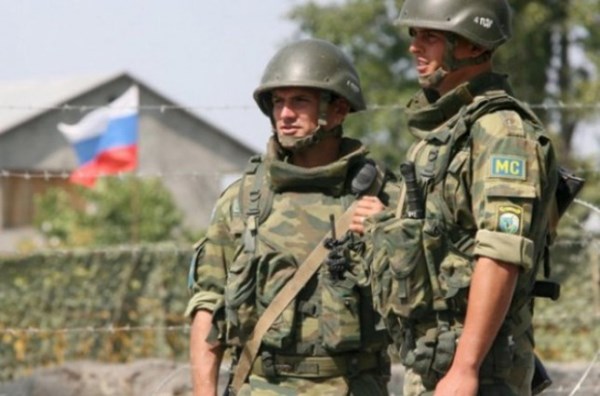Moscow’s successes in Syria: Two churches built and monitoring of Israeli airspace began
The once obscure and underdeveloped Syrian port city of Tartus has turned in a short time into the largest closed water space in the area, with modern berths and shore-based ship life support systems. In an article for the Russian news outlet Izvestia, Russian military expert Vladislav Shurygin writes that the bay could comfortably accommodate “an entire flotilla”.
According to him, the developed infrastructure established in the bay can accommodate the crews of ships and submarines. The Russian military has also built depots, unloading platforms and a repair facility which can be used for inter-voyage ship repairs there.
Shurygin is most flattering, however, of the “latest system for protecting the base against all probable threats – from the anti-sabotage system and anti-air defense to the anti-ship missiles”.
He points out that Tartus has been integrated into a unified combat system with Russia’s Khmeimim airbase, which he believes significantly boosts the combat capabilities of the Russian contingent in Syria.
The author notes that the military base in Khmeimim has also nearly been completed. The first Russian soldiers who arrived in Syria, he writes, “landed literally in an empty field – everything had to be brought from Russia”.
The author emphasizes the large quantity of work that has been done “while constantly opposing the enemy, under severe climate conditions, when the summer temperature reached 50 degrees Celsius, to create and deploy a modern military base with all the combat and residential infrastructure. And our military has done this. In a short period of time, command structures were formed and a control system was organized. For the first time, a division like the Center for Reconciliation of Opposing Sides was created.”
The author describes Khmeimim as a modern military base, built according to the highest global standards, protected against both ground and aerial attacks.
“The nearby approaches to the base are protected by the latest TorM2 and Pantsir M close-range anti-aircraft systems which, situated on especially erected mounds, are reminiscent of medieval fortresses, and outposts stationed in all threatening directions. But the primary element of sky defense is the S-400 Triumph system, which can take out any modern airborne enemy up to 400 km away. Effectively, Kheimim is covered by an impenetrable 400 km protective dome. Any airborne object that enters a 60 km zone around the airbase without permission and does not respond to questions will be destroyed immediately,” Shurygin writes.
He also draws attention to the base’s state-of-the-art radar systems, which monitor the surrounding airspace for hundreds of kilometers, even over the Mediterranean Sea and the countries bordering Syria. The article does not mention any of these countries by name.
Conscripts and officers of the Russian Aerospace Forces have erected two churches and a bakery in the base.
In November 2018, Viktor Murakhovsky, editor-in-chief of the Arsenal of the Fatherland magazine published an article on Facebook stating that the Pantsir-S1 systems are useless in Syria. However, he deleted the post a few days later.
In January 2019, Shurygin claimed that the effectiveness of the Israeli Air Force in Syrian airspace had fallen to 25%.
In February this year, a pro-Arab Russian news outlet reported that a Ukrainian Kolchuga passive sensor had helped the Israelis to destroy a Russian Pantsir system in Syria.
In April 2019, a large Russian landing ship that had made multiple long-distance trips in the Mediterranean broke down while entering the Syrian port of Tartus to deliver supplies. In 2016, Russia’s Admiral Kuznetsov aircraft carrier billowed clouds of black smoke as it entered the Mediterranean.
